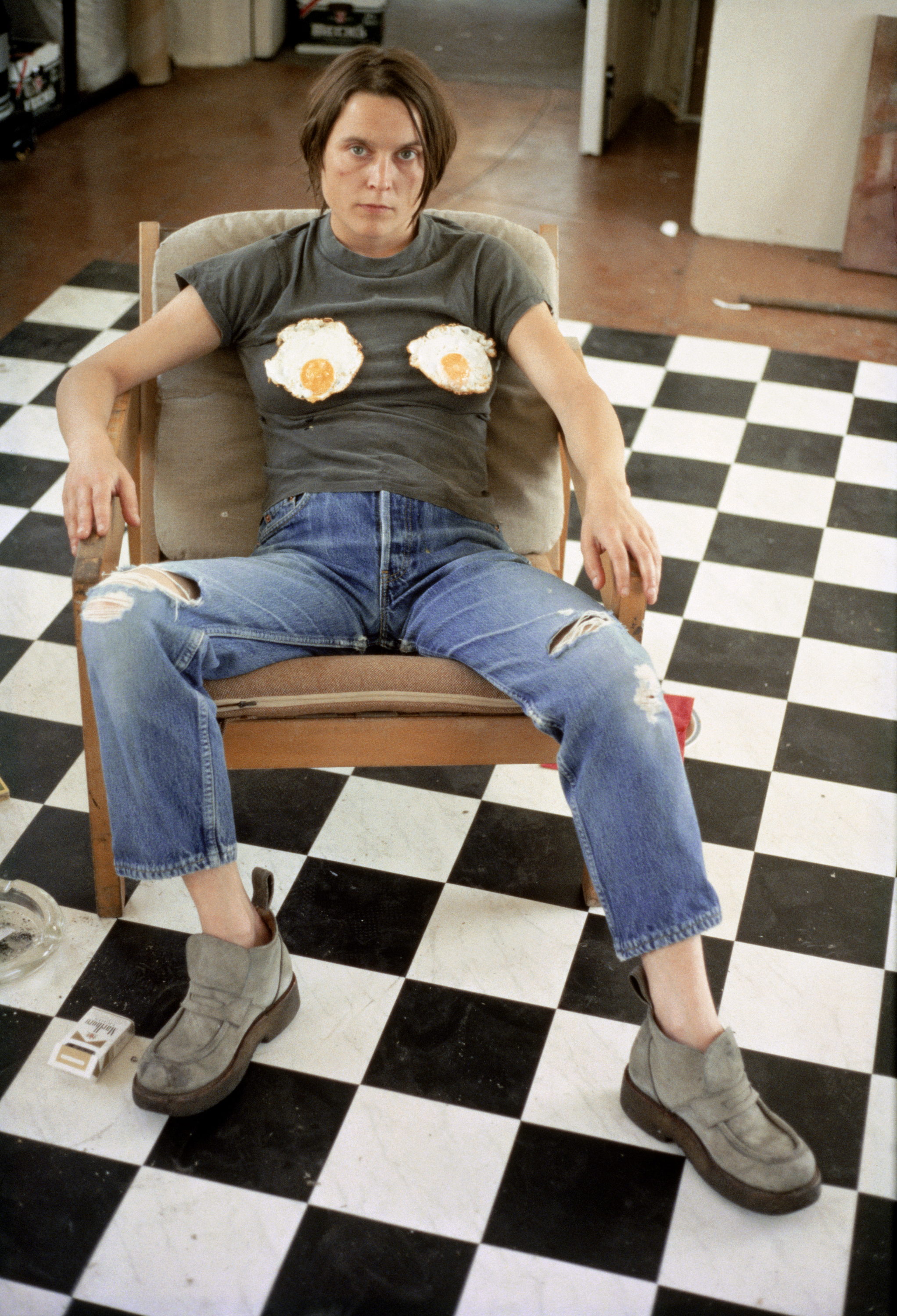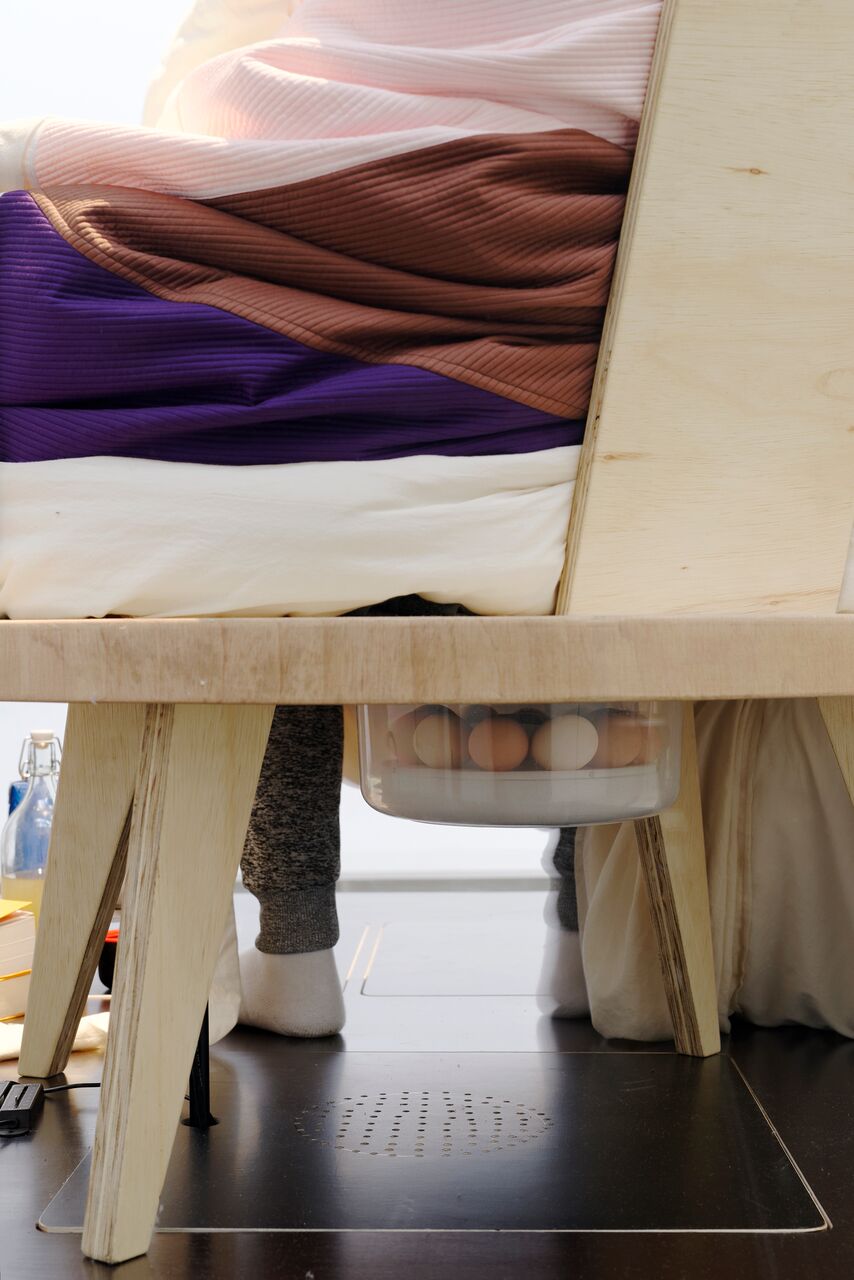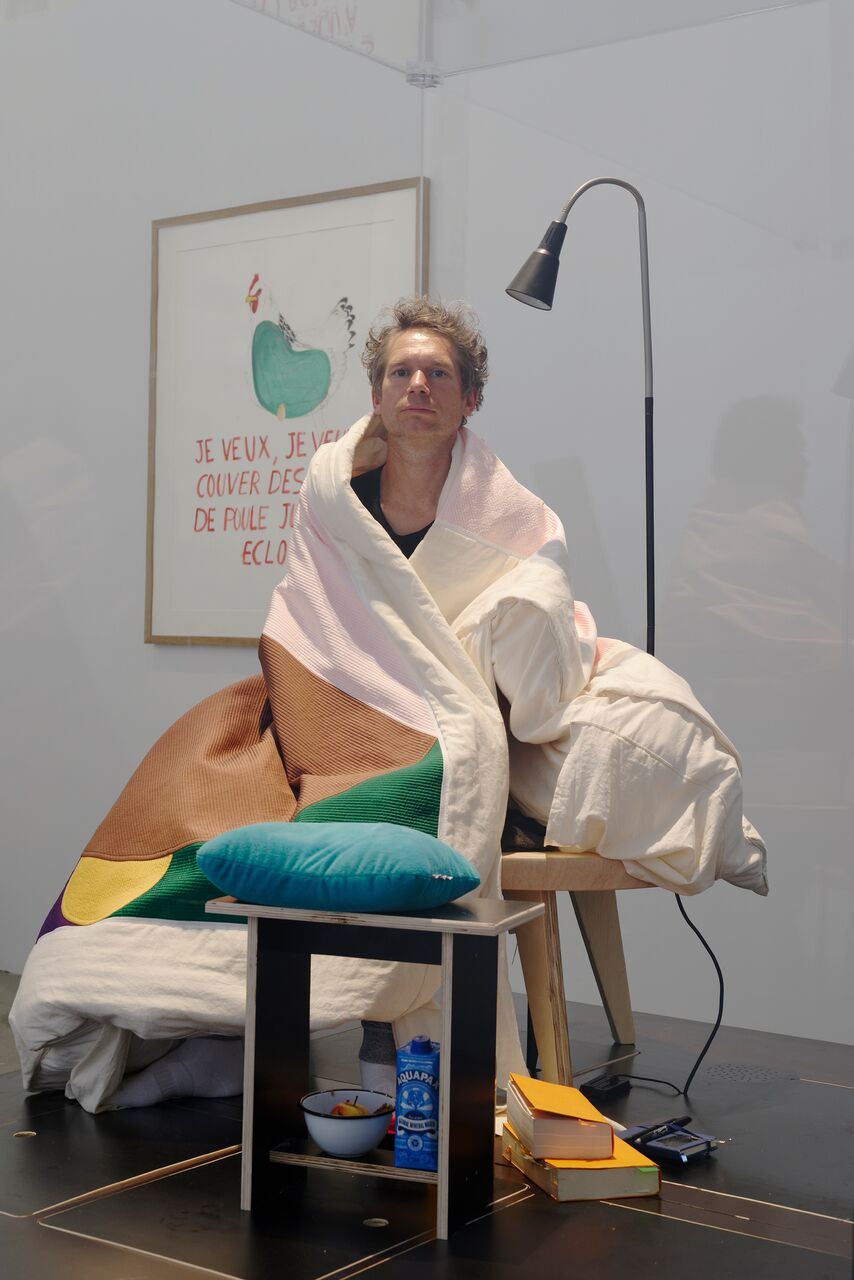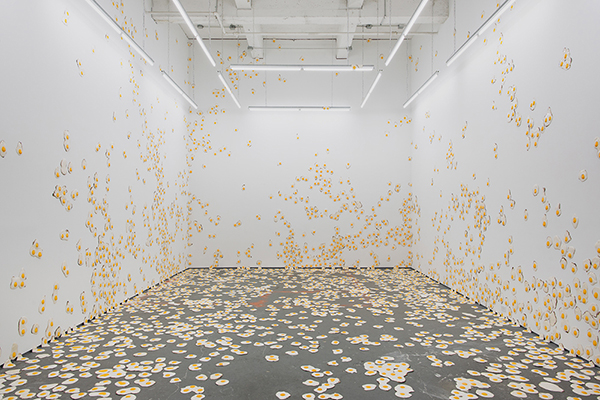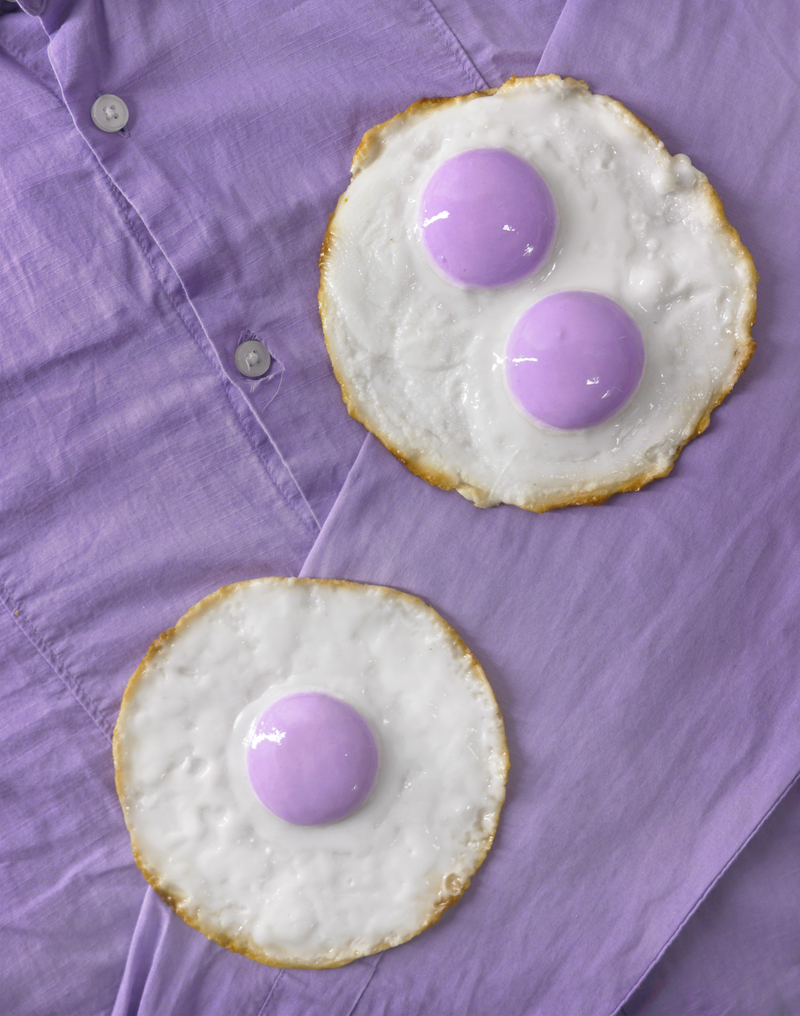
Eggs are funny and weird and pretty. The egg is the starter object when we learn about light and shade in art class. They were one of the first things I was proud of drawing, probably because their rounded surfaces make them really easy to get right. It’s not that difficult to draw a lopsided oval. I will give the artists featured here the benefit of the doubt and suggest that ease isn’t their primary reason for being so drawn to eggy forms, but, boy, do they love them all the same.
Many artists make use of the egg’s shape (and its jazzy appropriation by chocolate companies) to create something visually sumptuous. Take art magpie Jeff Koons’s gigantic metallic Cracked Eggs, a treat left by the Easter bunny for only the best of kids or, perhaps, the wealthiest. His Cracked Eggs sculptures, coloured in blue and magenta, stand two metres tall and play with all the visual delights that eggs offer: smooth, delicate and, in this case, shining with all the glory of a foil-wrapped bumper offering from Cadbury’s that would set Augustus Gloop up for life.
Others like to explore the strangeness that lies within the egg. Japanese artist Soshiro Matsubara presents two lilac fried eggs in her photograph Purple Fried Eggs on Purple Shirt, which would be odd enough in itself, but she’s pushed it a level further by showing one double-yolker (anyone who has accidentally bought a box of double-yolked eggs will understand the horror of unexpectedly cracking one open).
Some artists let the egg’s natural greatness shine. Kate Sammons’s simply named Eggs presents six perfectly white eggs in a clear vessel, nestled together and bringing to mind both the warmth and closeness craved by these objects in their most natural setting as well as the delicacy of their fine shells. Ugo Rondinone’s sculptural work Still Life (Five Eggs) similarly presents the beautiful simplicity of a brown hen’s egg, reflecting on the art-historical tradition of still-life painting.
There are funny art ones (see David Shrigley’s droll Eggs), but eggs can be political too. One of YBA star Sarah Lucas’s best-known works, Self-Portrait with Fried Eggs, takes on the derogatory language that is applied to women’s bodies in a manner that is both potent and humorous.
Other artists like to play a game of chicken. It isn’t enough to discuss the eggs, one must become the hen. French artist Abraham Poincheval is currently holed up at Paris’s Palais de Tokyo, incubating ten eggs with the heat from his body. The widely publicized work—everybody from Cosmopolitan to the Daily Mail has had their say—has drawn both intrigue and horror. In all probability, his batch of chicklets will die. As animal science expert R. Michael Hulet told Time magazine about the project: “You want to have ideal conditions so that those birds that hatch have the best chance at life. This seems like it’s putting them in an abnormal situation.” You don’t say.
Of course, for those who don’t like a particular work of contemporary art, eggs offer a perfect way to visualize your disgust. That’s precisely what one unhappy customer did to Martin Creed’s Turner Prize-winning Work No. 227: The Lights Going On and Off, which drew some unwelcome parallels with the Emperor’s new clothes. After hurling eggs at the innocently blinking work, the woman in question was banned from the Tate for life. Unfortunately, there doesn’t seem to be an image of Creed’s derided work in full egg mode, but let’s imagine Christopher Chiappa’s barmy LIVESTRONG installation at Kate Werble Gallery in New York offers a nice illustration.
